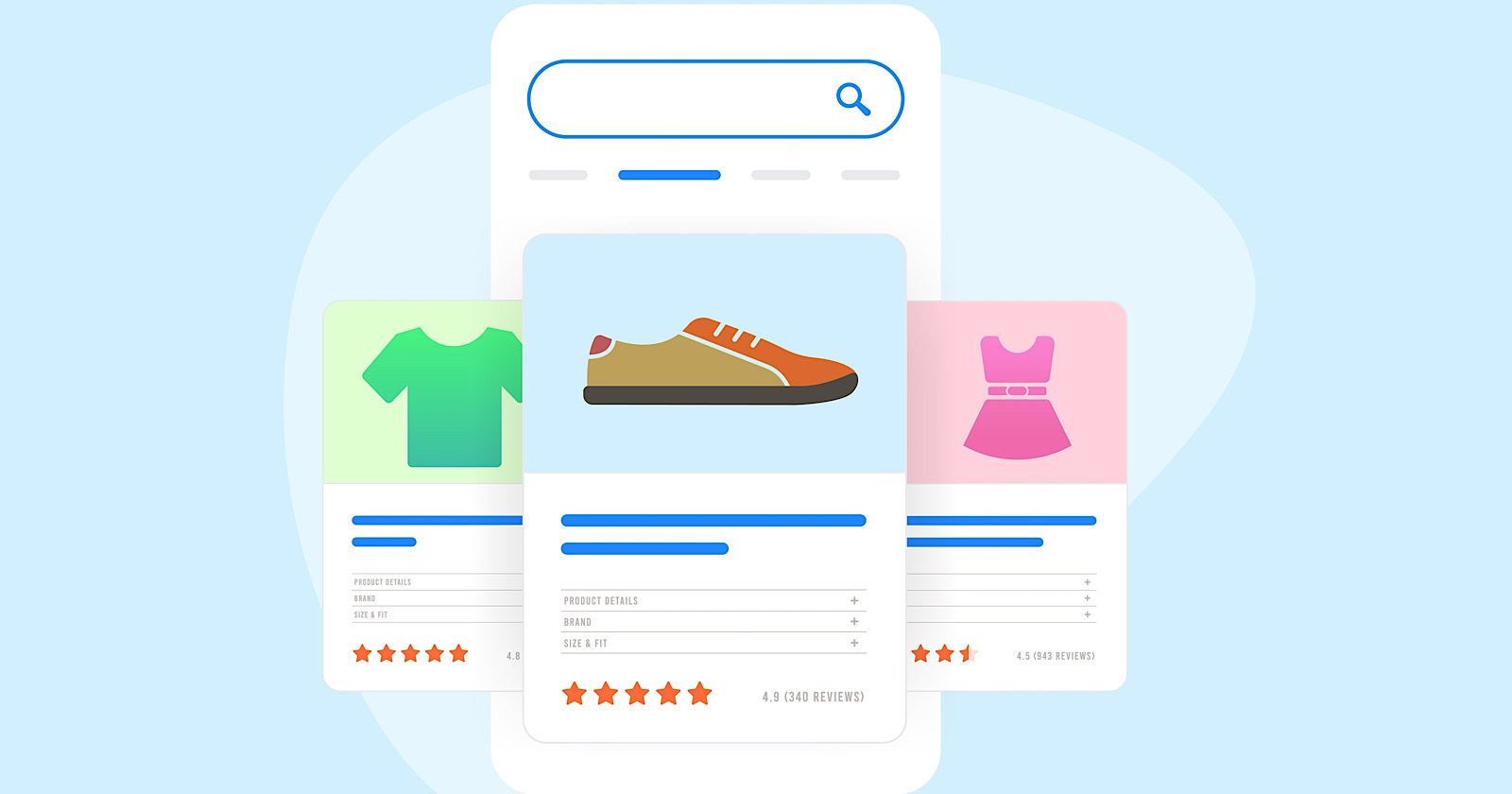SEO
Are the days of pure organic growth over for apps?

30-second summary:
- Has it become nearly impossible to cut through the noise of six million apps in app stores?
- For app marketing to be effective, it has to take into consideration the whole ecosystem that affects your app’s marketing performance
- Whether it is app store optimization (ASO) or combining organic and paid user acquisition, marketers need to look at data holistically and ask the right questions when analyzing app performance
- A successful app marketing strategy understands the correlation between ASO and paid user acquisition efforts
- You need to understand how your paid funnel impacts organic growth and vice versa
Whether you like it or not, apps have become a day-to-day standard for businesses and consumers. There is an app for everything, whether it is shopping, banking, travel, or gaming. In fact, a recent survey has found that 88 percent of mobile time is spent within apps.
According to Statista’s data from Q2 of 2022, there are more than six million apps across Google Playstore, Apple app store, and Amazon store.

Source: Statista
That’s why marketing your app properly has never been more important and has become an integral part of a business’s marketing strategy. But for it to be effective, app marketing has to take into consideration the whole ecosystem that affects your app’s marketing performance. Whether it is app store optimization (ASO) or combining organic and paid user acquisition (for example, via Google App Campaigns and Apple Search Ads), marketers need to look at data holistically and ask the right questions when analyzing an app’s performance.
Here I will share some of the knowledge I have gained and tricks of the trade I have learned over the past 10 years in the marketing field.
Organic growth on its own won’t take you far
While a few years ago ASO may have been the most important part of your app marketing strategy, to stay competitive in the busy app marketing landscape, you need to power up your User Acquisition (UA) strategy. This does not mean that ASO is no longer important – it sure is – but it has to be combined with your paid user acquisition strategy for an app’s sustainable growth. Both organic and paid UA has the main goal to drive quality conversions while maintaining a low cost per conversion.
To start with, you need a solid ASO foundation to maintain a stream of high-quality users across channels. It is essential as the user will ultimately land in your app store listing. You are literally wasting your money if you haven’t invested time in ASO and optimizing your store listing.
Paid user acquisition can lead to more organic app installs. Ads will bring new attention to your app store listing. The more installs your app generates, the higher your app will be ranked in the app stores. As a result, it increases visibility across search results and browse sections. Due to increased visibility, more and more users will land in your organic store listing and download your app. Hence the growth loop continues!
A successful strategy is about understanding the correlation between ASO and paid user acquisition efforts. You need to understand how your paid funnel impacts organic growth and vice versa. At GAMEE, we have used App Radar’s all-in-one platform which has helped our team work together within one system and understand, as well as maximize, the impact of organic and paid user acquisition for both Google and Apple app stores.
Analyzing app performance
After putting a lot of effort into optimizing your UA, don’t just sit back and hope to see perfect results. Throughout the campaign, you should be analyzing your app’s performance and asking the right questions. You’d probably like to know how much growth your ASO efforts brought. Or was it your paid UA traffic that led to an increase or drop? It can be challenging to answer all these questions, especially considering many factors that can play a significant role. As an example, let’s look at a couple of scenarios.
Scenario one: A drop in app installs
Seeing a drop in installs? It might be concerning at first sight. However, the good news is that there is most probably an explanation for every decrease in installs. And for every problem, there is also a solution.
One crucial impact factor you need to consider is paid user acquisition efforts. When you notice a decrease in downloads, you should first check whether you had ads running during that specific time. Ads can bring a significant amount of traffic to your app, and once you stop or reduce them, this might have a substantial effect on your results. Check the correlation between organic and paid conversions, and then analyze how your paid conversions impact your total growth and understand whether an increase in installs might be due to reduced activity via paid channels.
What should you do now?
First, try to get a better picture of the situation by looking at the last 30 or 90 days timeframe and understanding how significant the impact was. If pausing, for example, your Google App Campaigns greatly decreased your installs, you should consider re-activating the ads.
Scenario two: An increase in app installs
This is the result we are all aiming for. Ideally, you’d want this to continue throughout and beyond your marketing campaign. But for that, you need to know what was impacting the increase. Transferring and attributing success from one place to another can be tricky if you do not know where the success is coming from.
Your best bet would be to look at the conversion breakdown to help you find the answer. Is it Google Ads, Apple Search Ads, another paid channel, or ASO? If you run a campaign via a paid channel at the same time as the installs increased then it is most likely that that was what influenced your overall app growth. It is worth also evaluating which ad platform is the most efficient. Do you get a better cost per conversion with a paid channel? To get an idea of whether your app is performing better or worse, you may want to compare the figures with previous campaigns – How did your impressions, conversions, and costs perform compared to the previous period? Taking all of this into account will help you determine whether you should change your focus or make tweaks to your campaign.
Three takeaways from GAMEE’s experience
At GAMEE we have learned that there are three elements every app marketer should never stop working on:
ASO
It is the end-point to all of your app activities. Every dollar and hour invested elsewhere can be multiplied by a good ASO strategy and approach. This is where our use of App Radar’s platform was extremely valuable in maximizing our campaigns.
Testing
Use custom app store listings (where possible), various combinations of paid ad networks, and app store A/B tests to get the best results.
Prioritizing
Pick the audience, markets, regions, and/or demographics you need to win and focus your ASO and paid channels on them.
While analyzing the impact of paid and organic user acquisition is no easy task, the one thing you don’t want to do is put all your eggs in one basket. You can’t rely on just organic UA or just paid UA. For a successful app marketing strategy, both areas have to work in tandem. Your campaign should also allow room for testing. This enables you to tweak and pivot strategy as you go, and tailor it for your target audience. Trust me, if properly managed your app will soon be reaping your strategy’s benefits.
Jan Gemrich is Chief Marketing Officer at GAMEE, a high-engagement play-to-earn gaming platform, that attracts over 30 million users. GAMEE is part of Animoca brands which is a leading blockchain gaming company. Jan previously worked for 9+ years at Google, based out of Prague, London, and Toronto, where he was responsible for user growth (Google Pay, Android, Search) and the launch of new products (Pixel, Stadia, etc).
Subscribe to the Search Engine Watch newsletter for insights on SEO, the search landscape, search marketing, digital marketing, leadership, podcasts, and more.
Join the conversation with us on LinkedIn and Twitter.
SEO
Google Cautions On Blocking GoogleOther Bot

Google’s Gary Illyes answered a question about the non-search features that the GoogleOther crawler supports, then added a caution about the consequences of blocking GoogleOther.
What Is GoogleOther?
GoogleOther is a generic crawler created by Google for the various purposes that fall outside of those of bots that specialize for Search, Ads, Video, Images, News, Desktop and Mobile. It can be used by internal teams at Google for research and development in relation to various products.
The official description of GoogleOther is:
“GoogleOther is the generic crawler that may be used by various product teams for fetching publicly accessible content from sites. For example, it may be used for one-off crawls for internal research and development.”
Something that may be surprising is that there are actually three kinds of GoogleOther crawlers.
Three Kinds Of GoogleOther Crawlers
- GoogleOther
Generic crawler for public URLs - GoogleOther-Image
Optimized to crawl public image URLs - GoogleOther-Video
Optimized to crawl public video URLs
All three GoogleOther crawlers can be used for research and development purposes. That’s just one purpose that Google publicly acknowledges that all three versions of GoogleOther could be used for.
What Non-Search Features Does GoogleOther Support?
Google doesn’t say what specific non-search features GoogleOther supports, probably because it doesn’t really “support” a specific feature. It exists for research and development crawling which could be in support of a new product or an improvement in a current product, it’s a highly open and generic purpose.
This is the question asked that Gary narrated:
“What non-search features does GoogleOther crawling support?”
Gary Illyes answered:
“This is a very topical question, and I think it is a very good question. Besides what’s in the public I don’t have more to share.
GoogleOther is the generic crawler that may be used by various product teams for fetching publicly accessible content from sites. For example, it may be used for one-off crawls for internal research and development.
Historically Googlebot was used for this, but that kind of makes things murky and less transparent, so we launched GoogleOther so you have better controls over what your site is crawled for.
That said GoogleOther is not tied to a single product, so opting out of GoogleOther crawling might affect a wide range of things across the Google universe; alas, not Search, search is only Googlebot.”
It Might Affect A Wide Range Of Things
Gary is clear that blocking GoogleOther wouldn’t have an affect on Google Search because Googlebot is the crawler used for indexing content. So if blocking any of the three versions of GoogleOther is something a site owner wants to do, then it should be okay to do that without a negative effect on search rankings.
But Gary also cautioned about the outcome that blocking GoogleOther, saying that it would have an effect on other products and services across Google. He didn’t state which other products it could affect nor did he elaborate on the pros or cons of blocking GoogleOther.
Pros And Cons Of Blocking GoogleOther
Whether or not to block GoogleOther doesn’t necessarily have a straightforward answer. There are several considerations to whether doing that makes sense.
Pros
Inclusion in research for a future Google product that’s related to search (maps, shopping, images, a new feature in search) could be useful. It might be helpful to have a site included in that kind of research because it might be used for testing something good for a site and be one of the few sites chosen to test a feature that could increase earnings for a site.
Another consideration is that blocking GoogleOther to save on server resources is not necessarily a valid reason because GoogleOther doesn’t seem to crawl so often that it makes a noticeable impact.
If blocking Google from using site content for AI is a concern then blocking GoogleOther will have no impact on that at all. GoogleOther has nothing to do with crawling for Google Gemini apps or Vertex AI, including any future products that will be used for training associated language models. The bot for that specific use case is Google-Extended.
Cons
On the other hand it might not be helpful to allow GoogleOther if it’s being used to test something related to fighting spam and there’s something the site has to hide.
It’s possible that a site owner might not want to participate if GoogleOther comes crawling for market research or for training machine learning models (for internal purposes) that are unrelated to public-facing products like Gemini and Vertex.
Allowing GoogleOther to crawl a site for unknown purposes is like giving Google a blank check to use your site data in any way they see fit outside of training public-facing LLMs or purposes related to named bots like GoogleBot.
Takeaway
Should you block GoogleOther? It’s a coin toss. There are possible potential benefits but in general there isn’t enough information to make an informed decision.
Listen to the Google SEO Office Hours podcast at the 1:30 minute mark:
Featured Image by Shutterstock/Cast Of Thousands
SEO
AI Search Boosts User Satisfaction

A new study finds that despite concerns about AI in online services, users are more satisfied with search engines and social media platforms than before.
The American Customer Satisfaction Index (ACSI) conducted its annual survey of search and social media users, finding that satisfaction has either held steady or improved.
This comes at a time when major tech companies are heavily investing in AI to enhance their services.
Search Engine Satisfaction Holds Strong
Google, Bing, and other search engines have rapidly integrated AI features into their platforms over the past year. While critics have raised concerns about potential negative impacts, the ACSI study suggests users are responding positively.
Google maintains its position as the most satisfying search engine with an ACSI score of 81, up 1% from last year. Users particularly appreciate its AI-powered features.
Interestingly, Bing and Yahoo! have seen notable improvements in user satisfaction, notching 3% gains to reach scores of 77 and 76, respectively. These are their highest ACSI scores in over a decade, likely due to their AI enhancements launched in 2023.
The study hints at the potential of new AI-enabled search functionality to drive further improvements in the customer experience. Bing has seen its market share improve by small but notable margins, rising from 6.35% in the first quarter of 2023 to 7.87% in Q1 2024.
Customer Experience Improvements
The ACSI study shows improvements across nearly all benchmarks of the customer experience for search engines. Notable areas of improvement include:
- Ease of navigation
- Ease of using the site on different devices
- Loading speed performance and reliability
- Variety of services and information
- Freshness of content
These improvements suggest that AI enhancements positively impact various aspects of the search experience.
Social Media Sees Modest Gains
For the third year in a row, user satisfaction with social media platforms is on the rise, increasing 1% to an ACSI score of 74.
TikTok has emerged as the new industry leader among major sites, edging past YouTube with a score of 78. This underscores the platform’s effective use of AI-driven content recommendations.
Meta’s Facebook and Instagram have also seen significant improvements in user satisfaction, showing 3-point gains. While Facebook remains near the bottom of the industry at 69, Instagram’s score of 76 puts it within striking distance of the leaders.
Challenges Remain
Despite improvements, the study highlights ongoing privacy and advertising challenges for search engines and social media platforms. Privacy ratings for search engines remain relatively low but steady at 79, while social media platforms score even lower at 73.
Advertising experiences emerge as a key differentiator between higher- and lower-satisfaction brands, particularly in social media. New ACSI benchmarks reveal user concerns about advertising content’s trustworthiness and personal relevance.
Why This Matters For SEO Professionals
This study provides an independent perspective on how users are responding to the AI push in online services. For SEO professionals, these findings suggest that:
- AI-enhanced search features resonate with users, potentially changing search behavior and expectations.
- The improving satisfaction with alternative search engines like Bing may lead to a more diverse search landscape.
- The continued importance of factors like content freshness and site performance in user satisfaction aligns with long-standing SEO best practices.
As AI becomes more integrated into our online experiences, SEO strategies may need to adapt to changing user preferences.
Featured Image: kate3155/Shutterstock
SEO
Google To Upgrade All Retailers To New Merchant Center By September

Google has announced plans to transition all retailers to its updated Merchant Center platform by September.
This move will affect e-commerce businesses globally and comes ahead of the holiday shopping season.
The Merchant Center is a tool for online retailers to manage how their products appear across Google’s shopping services.
Key Changes & Features
The new Merchant Center includes several significant updates.
Product Studio
An AI-powered tool for content creation. Google reports that 80% of current users view it as improving efficiency.
This feature allows retailers to generate tailored product assets, animate still images, and modify existing product images to match brand aesthetics.
It also simplifies tasks like background removal and image resolution enhancement.
Centralized Analytics
A new tab consolidating various business insights, including pricing data and competitive analysis tools.
Retailers can access pricing recommendations, competitive visibility reports, and retail-specific search trends, enabling them to make data-driven decisions and capitalize on popular product categories.
Redesigned Navigation
Google claims the new interface is more intuitive and cites increased setup success rates for new merchants.
The platform now offers simplified website verification processes and can pre-populate product information during setup.
Initial User Response
According to Google, early adopters have shown increased engagement with the platform.
The company reports a 25% increase in omnichannel merchants adding product offers in the new system. However, these figures have yet to be independently verified.
Jeff Harrell, Google’s Senior Director of Merchant Shopping, states in an announcement:
“We’ve seen a significant increase in retention and engagement among existing online merchants who have moved to the new Merchant Center.”
Potential Challenges and Support
While Google emphasizes the upgrade’s benefits, some retailers, particularly those comfortable with the current version, may face challenges adapting to the new system.
The upgrade’s mandatory nature could raise concerns among users who prefer the existing interface or have integrated workflows based on the current system.
To address these concerns, Google has stated that it will provide resources and support to help with the transition. This includes tutorial videos, detailed documentation, and access to customer support teams for troubleshooting.
Industry Context
This update comes as e-commerce platforms evolve, with major players like Amazon and Shopify enhancing their seller tools. Google’s move is part of broader efforts to maintain competitiveness in the e-commerce services sector.
The upgrade could impact consumers by improving product listings and providing more accurate information across Google’s shopping services.
For the e-commerce industry as a whole, it signals a continued push towards AI-driven tools and data-centric decision-making.
Transition Timeline
Google states that retailers will be automatically upgraded by September if they still need to transition.
The company advises users to familiarize themselves with the new features before the busy holiday shopping period.
Featured Image: BestForBest/Shutterstock
-

 SEARCHENGINES5 days ago
SEARCHENGINES5 days agoBillions Of Google goo.gl URLs To 404 In The Future
-
SEARCHENGINES4 days ago
Daily Search Forum Recap: July 22, 2024
-

 SEARCHENGINES7 days ago
SEARCHENGINES7 days agoGoogle Core Update Coming, Ranking Volatility, Bye Search Notes, AI Overviews, Ads & More
-

 SEO5 days ago
SEO5 days ago11 Copyscape Alternatives To Check Plagiarism
-

 SEO6 days ago
SEO6 days agoGoogle Warns Of Last Chance To Export Notes Search Data
-
SEARCHENGINES3 days ago
Daily Search Forum Recap: July 23, 2024
-

 AFFILIATE MARKETING6 days ago
AFFILIATE MARKETING6 days agoThe Top 5 AI Tools That Can Revolutionize Your Workflow and Boost Productivity
-

 SEO4 days ago
SEO4 days agoSystem Builders – How AI Changes The Work Of SEO
















You must be logged in to post a comment Login